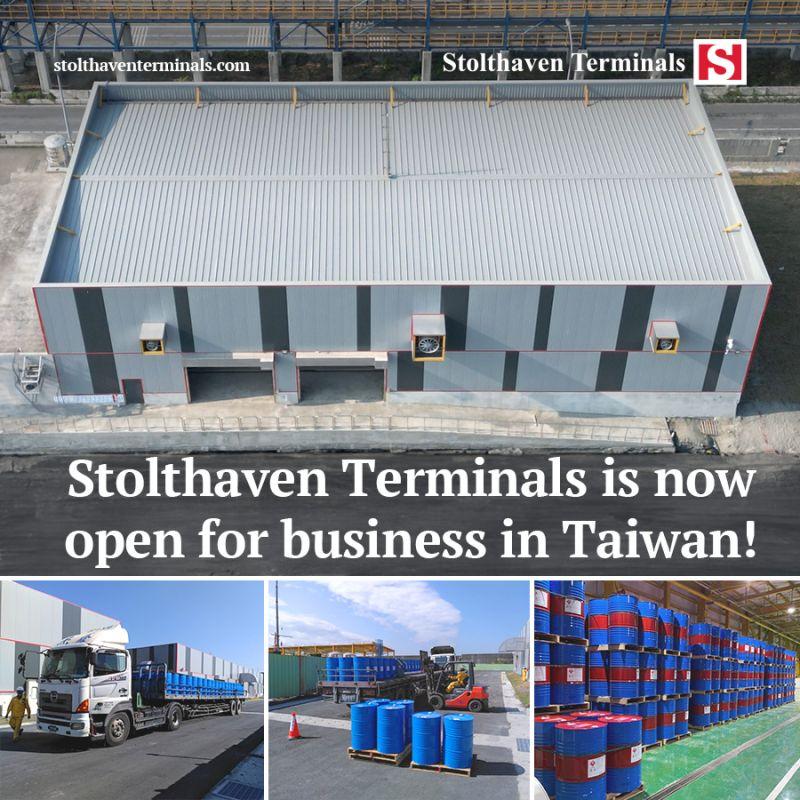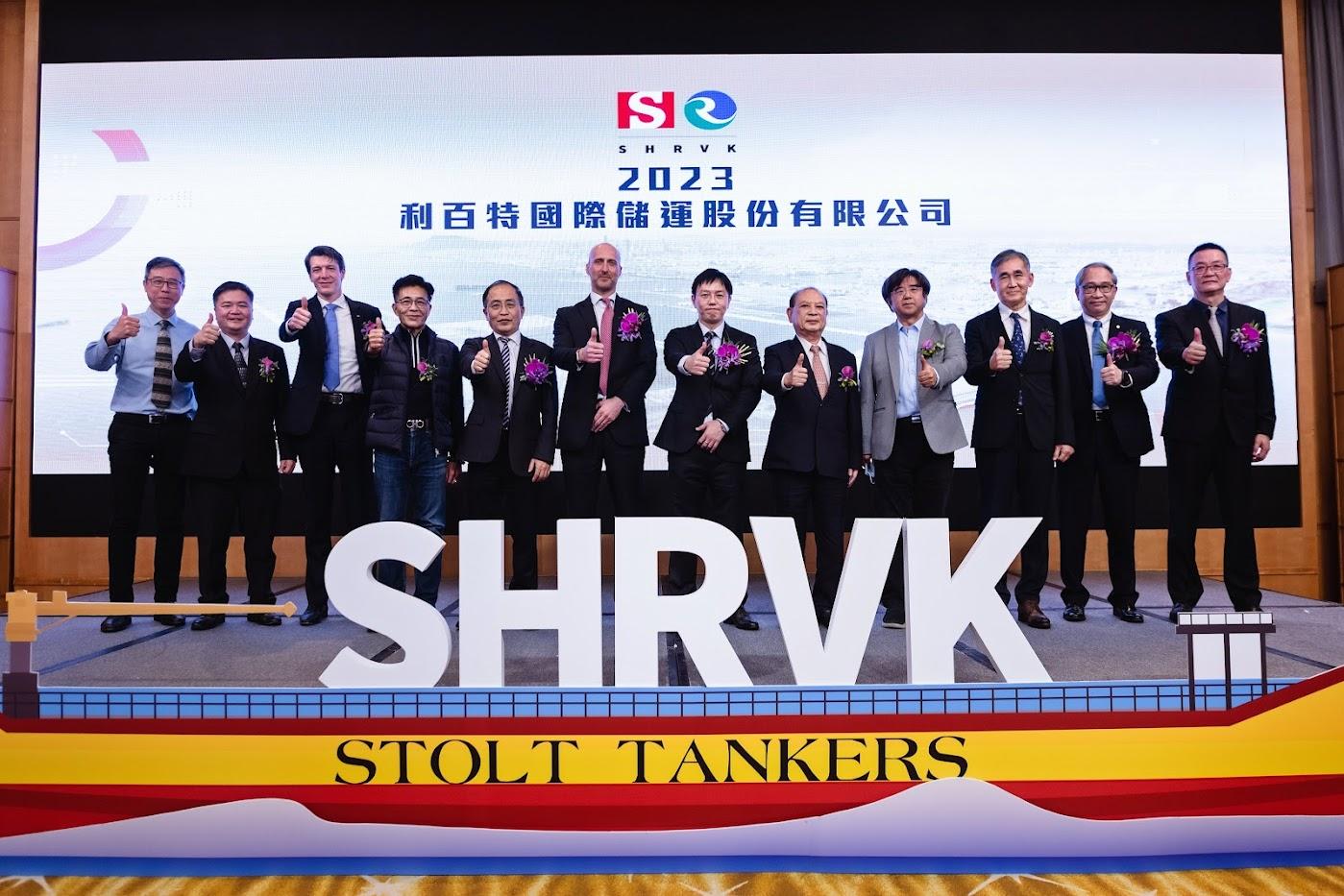The storage outlook: reflecting on 2021 and what's in store for the year ahead

※Source of the materials: www.stolt-nielsen.com/news-insights/insights/the-storage-outlook-reflecting-on-2021-and-whats-in-store-for-the-year-ahead/
In the January 2022 issue of Tank Storage Magazine, Guy Bessant, President, Stolthaven Terminals, was one of nine senior executives asked to reflect on the storage industry in 2021 and what the future might hold for the year ahead. Following is Guy’s excerpt from the published article.
Painful pandemic uncertainties continued throughout 2021

After the unprecedented challenges of 2020, brought about by the Covid-19 pandemic, the world hoped to see some sense of normality return in 2021. However, this was not to be the case. Covid-19 remained omnipresent throughout the year and continued to impact society and the broader economy as more variants appeared across the globe.
There were, however, some positive signs in our industry with regards to the volume of chemicals being shipped and, towards the end of 2021, demand for transport fuels, including aviation fuel, increased.
Terminal businesses overall performed well, although many were negatively impacted by weakness in the petroleum market, including
lower throughput. There was significant M&A activity in the bulk storage industry, which surpassed US$4 billion (€3.6 billion) during the year, highlighting that ours is still viewed as a solid industry to invest in.
At Stolthaven Terminals, we maintained momentum on our longer-term strategy, whilst also continuing to provide our customers with reliable services of the highest quality, our employees with a safe and enjoyable workplace, and delivered solid returns on our investments. Although some investments were postponed during 2020, we added capacity during 2021 and have ongoing development projects in Mount Maunganui (New Zealand), Dagenham (UK), Westport (Malaysia) and Ulsan (South Korea).
At the same time, we are evaluating additional opportunities, including potential greenfield terminals in Ceyhan (Turkey) and Kaohsiung (Taiwan), and those linked to the overall energy transition. We continued to upgrade our existing facilities as part of our asset management strategy and will begin construction of a new jetty at our Dagenham terminal during 2022.
As well as investing in physical assets, we also focussed on projects to support the five pillars of our strategy: digitalisation; innovation; sustainability; employee engagement and communication; and gaining a better understanding of our customers’ needs.
2022 outlook
Looking ahead, there are several key issues with significant implications for the bulk-liquid storage industry that we are monitoring closely.
Supply chain disruption
After a significant contraction in maritime trade during 2020 there has been a broad pick-up in 2021.
The rebound in trade flows is the result of large government stimulus packages and increased consumer spending on goods, particularly through e-commerce, coupled with restocking and inventory building. The rebound was fairly swift because, unlike the global financial crisis of 2009, the downturn was not synchronised across the world.
The medium-term outlook remains positive, although subject to mounting risks and uncertainties, and moderated in line with projected lower growth in the world economy.
In the chemical industry a challenge faced by many is the significant increase in shipping container rates, which increased by more than 200% in some key trade lanes during the past year. This, coupled with capacity constraints, meant that there were noticeably more enquiries for bulk chemical storage as shippers tried to find solutions. In reality, only a small proportion of these materialised as redesigning supply chains including finding available storage at load and discharge ports proved difficult.
Whilst this was great news for the major container shipping companies, who saw record profits in 2021, and have taken the opportunity to invest in new building capacity, the reality is that the current disruption will continue well into 2022, and potentially beyond. Additional shipping capacity alone is not the solution, but rather port infrastructure and truck availability also need to improve. A situation that will not easily be solved in the short term.
From a bulk shipping perspective, shipping demand for petrochemicals is expected to increase by approximately 4% per annum until 2025, however the chemical tanker order book for new buildings is at a multi-year low. This, coupled with limited yard capacity, ongoing low returns, and uncertainty on ‘future fuels’, means it is likely that the supply and demand imbalance will result in higher freight rates especially once M/R ships return to carrying petroleum products.
Other ongoing challenges for the storage industry are port inefficiencies and the historical under investment in port infrastructure. These, coupled with new storage capacity being added without thorough planning could result in further costly port delays for ship owners.
These costs would simply be unacceptable and unsustainable in other industries – aviation for example. To solve this there needs to be investment not only in physical assets, but also in digitalisation and the use of data to drive efficiencies. There has been very little progress in the past year.
Finally, the more than a decade-long optimisation of supply chains by our customers was challenged during the past year. Optimising a supply chain only works if there is a reliable and quality service. There is very little buffer in the supply chain for any unexpected ‘black swan events’ or disruption, such as the deep freeze in Houston in early 2021 or Hurricane Ida in Louisiana in the summer.
Questions to address for the coming year are whether we will see customers start to increase their inventories or look for multiple storage locations as an integral part of their business continuity plans. If so, as an industry, we need to help.
Sustainability
Sustainability continues to be a significant focus for all businesses, not least due to COP26 throwing climate change into the spotlight once more.
In the shipping industry the focus remains firmly on reducing CO2 emissions, but in the coming years we can expect to see more emphasis on other environmental issues including degassing and wastewater as evidenced by the EU Green Deal. This is an area where ports and storage companies can play an important role – by providing sustainable shore power, vapour treatment systems and wastewater facilities.
The challenge is for businesses to put our differences aside and work together as a joined-up ecosystem to solve the problem.
The issue is the same ‘chicken and egg’ situation that is also evident in the ‘future fuels’ discussion for the shipping industry. Progress is being made to reduce its carbon footprint but to make a significant impact alternative fuels are needed – biofuels, green methanol, ammonia and hydrogen.
However, one major hurdle is that ship owners won’t build new ships that use new fuels until they can rely on availability at their main bunkering locations. And storage companies won’t invest in more storage until they are confident that the shipping industry has agreed on its preferred fuel.
In addition, new legislation such as the EU Green Deal will have significant ramifications for the storage industry, and its customers. Progress is being made but this will be at a cost. The question is whether the industry will be forced to transition through the use of ‘sticks’ such as carbon taxes, or ‘carrots’ will be offered in the form of government subsidies.
In the coming year, we could see the European carbon tax replicated in other markets. With the margins of service providers already thin, who will bear these costs? If consumers are serious about protecting the planet, then they will need to be willing to pay more for the goods they consume.
One topic not often discussed, but that must be addressed to ensure the sustainability of global supply chains, is the situation of the two million seafarers who ensure that ships move products around the world. The way in which these vital employees have been treated during the last two years, with ports and local authorities refusing crew changes, leaving individuals onboard for extended periods of time, has been appalling.
Likewise, workers in the trucking sector are faced with the challenges of long working hours and low pay, and solutions are needed. Without improving the wellbeing of seafarers and truckers there will be a negative impact on how products are able to transit through most terminals.
At Stolthaven, we have continued to develop several initiatives to address the multiple facets of sustainability, not only energy use and the reduction of emissions, but issues throughout our organisation including attracting new talent to an industry that is not always seen as attractive, diverse or inclusive. These are challenges that the whole industry faces.
2022 and beyond
Looking further into the future, the storage industry will continue to present opportunities and challenges in equal measure.
As an industry it is important that all parties, whether our customers, port authorities, governments, ship owners, storage companies, surveyors, banks, trucking companies, and other parties, work together to address common issues.
At Stolthaven, we will continue to focus on operating high-quality, safe terminals and delivering services that evolve to meet the ever-changing needs of our customers. We will also continue to pursue opportunities to partner with other industry leaders for the benefit of our customers, industry and wider society.
This article was first published in Tank Storage magazine on January 21, 2022.



